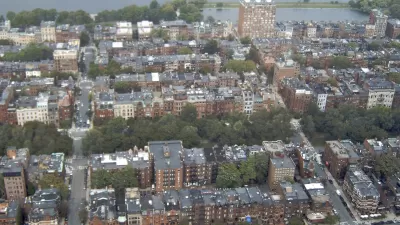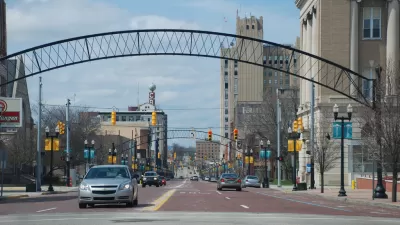In For A New Liberty, libertarian intellectual Murray Rothbard writes that leftist intellectuals had raised a variety of complaints against capitalism, and that "each of those complaints has been contradictory to one or more of their predecessors.” In the 1930s, leftists argued that capitalism was prone to ‘eternal stagnation”, while in the 1960s, they argued that capitalist economies had “grown too much” causing “excessive affluence” and exhaustion of the world’s resources. And so on.
In For A New
Liberty, libertarian intellectual Murray Rothbard writes that leftist
intellectuals had raised a variety of complaints against capitalism, and that "each
of those complaints has been contradictory to one or more of their
predecessors." In the 1930s, leftists
argued that capitalism was prone to ‘eternal stagnation", while in the 1960s,
they argued that capitalist economies had "grown too much" causing "excessive
affluence" and exhaustion of the world's resources. And so on.
It seems to
me that density-phobia involves a similar litany of contradictory
complaints. Traditionally, low-density
zoning has been based on a desire to exclude so-called "undesirables" and thus
keep property values high.
But now that
compact neighborhoods are becoming more desirable (and thus more expensive),
the argument that density leads to poverty and plummeting property values can
no longer be taken seriously.
But
Not-In-My-Back-Yard (NIMBY) activists now have a new argument: that far from
reducing property values, density increases them too much, by making the
neighborhood too desirable. At first
glance, this argument makes no sense: if a neighborhood that once had 20
apartment buildings now has 40, the supply of apartments is increased, thus
keeping the price down instead of up.
But the
NIMBYs notice the housing booms of New
York City, Vancouver and some other compact cities, and thus
conclude that density must mysteriously raise prices.
Why is this
argument flawed? First of all, density
and high prices have not always gone together.
In 1950, New Yorkers spent about the same amount of money on housing as
other Americans (about 25 percent).
Thus, it is probably the case that high housing prices in New York are the result of pro-NIMBY zoning
policies: according to Edward Glaeser's book Triumph of the City, Manhattan allowed 11,000 building permits per
year between 1955 and 1964, but only 3120 per year in the 1980s and 90s.
Second, there are plenty of
dense places that are more affordable than New York
(such as Philadelphia) and not-so-dense places
that are as expensive (such as San Diego and Sillicon Valley).
At the end of 2011, the median sale price in New York City and its suburbs was $414,000- but the average sale price in Santa Clara/San Jose was $549,000. (See http://www.realtor.org/wps/wcm/connect/210258804a1865779a1aff7f116f4bb7/REL11Q4T.pdf?MOD=AJPERES&CACHEID=210258804a1865779a1aff7f116f4bb7 )
Third, the high price of new housing does not cause housing as a whole to become less affordable. If consumers prefer newer housing to older, the newest housing will always be the most expensive- but if the new housing causes an overall increase in housing supply sufficient to surpass demand, the price of older housing may decline (as has occurred in the Rust Belt, where suburban sprawl has led to declining property values in some urban neighborhoods).

Alabama: Trump Terminates Settlements for Black Communities Harmed By Raw Sewage
Trump deemed the landmark civil rights agreement “illegal DEI and environmental justice policy.”

Study: Maui’s Plan to Convert Vacation Rentals to Long-Term Housing Could Cause Nearly $1 Billion Economic Loss
The plan would reduce visitor accommodation by 25% resulting in 1,900 jobs lost.

Planetizen Federal Action Tracker
A weekly monitor of how Trump’s orders and actions are impacting planners and planning in America.

Wind Energy on the Rise Despite Federal Policy Reversal
The Trump administration is revoking federal support for renewable energy, but demand for new projects continues unabated.

Passengers Flock to Caltrain After Electrification
The new electric trains are running faster and more reliably, leading to strong ridership growth on the Bay Area rail system.

Texas Churches Rally Behind ‘Yes in God’s Back Yard’ Legislation
Religious leaders want the state to reduce zoning regulations to streamline leasing church-owned land to housing developers.
Urban Design for Planners 1: Software Tools
This six-course series explores essential urban design concepts using open source software and equips planners with the tools they need to participate fully in the urban design process.
Planning for Universal Design
Learn the tools for implementing Universal Design in planning regulations.
Caltrans
Smith Gee Studio
Institute for Housing and Urban Development Studies (IHS)
City of Grandview
Harvard GSD Executive Education
Toledo-Lucas County Plan Commissions
Salt Lake City
NYU Wagner Graduate School of Public Service






























